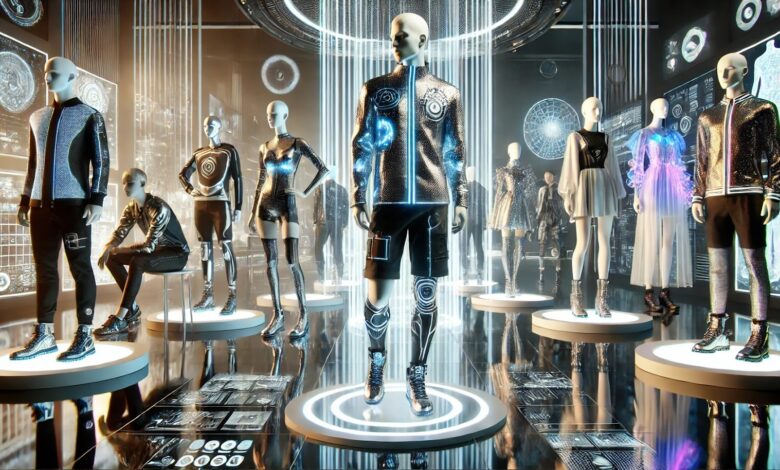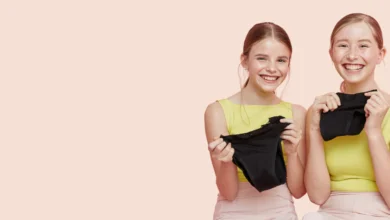Fashion Forward: The Future of Style, Tech, and Culture

Fashion has always been an outward expression of our inner creativity, capturing the values and aspirations of each generation. From the sumptuous corsets and gowns of the Victorian era to the rebellious streetwear of modern subcultures, style evolution reflects not just aesthetic preferences but also social, political, and technological shifts.
Now, as we stand on the precipice of another great transition, futuristic fashion trends are taking center stage. Gone are the days when flashy textiles and radical cuts alone could redefine the runway—today, designers and brands draw on innovation at every stage of production. Think wearable electronics, 3D-printed garments, lab-grown materials, and the blurring boundaries between physical reality and virtual existence.
This transformation is fueled by a convergence of cutting-edge technology, sustainability concerns, inclusivity drives, and a fundamental shift in the way we think about clothing. In essence, the future of fashion isn’t just about what we wear; it’s about how we live.
From startups experimenting with novel textiles to global powerhouses rolling out interactive garments, there’s a unified push to reimagine the relationship between body and cloth. The emphasis is no longer on building a seasonal wardrobe but on curating individual pieces that resonate with our personal ethos. Ethical practices, minimalist aesthetics, and advanced materials all highlight society’s desire to find balance in a hyper-connected world.
The concept of “fast fashion” is gradually losing ground to more enduring principles—longevity, uniqueness, and respect for our shared environment. The rise of cyber aesthetics, along with digital technologies like augmented reality (AR) and non-fungible tokens (NFTs), points to a realm where clothes can exist beyond physical seams. From modular garments that can be snapped together to smart fabrics able to track our vital signs, fashion is reaching extraordinary frontiers.
By examining the most prominent futuristic trends and observing how designers translate technology into tangible aesthetics, we can glean insights into what our collective wardrobe might look like in the coming decades. It’s an exciting glimpse into how creativity, innovation, and social consciousness can merge to create a truly transformative experience. Below, we explore key pillars defining futuristic fashion, revealing not just how our clothes might adapt but how they’ll redefine the world around us.
1. High-Tech Fabrics and Sustainable Materials
One of the most significant changes to modern fashion comes from the materials themselves. The textile industry is undergoing a renaissance fueled by the discovery or invention of new fibers that are stronger, lighter, and more adaptable. Traditional fabrics like cotton and wool remain enduring favorites, but their manufacturing processes are being overhauled to reduce water and chemical use. High-tech alternatives—ranging from lab-grown leather to bioengineered silk—promise to revolutionize the supply chain.
In futuristic fashion, we see a push toward biodegradable materials and closed-loop production systems. Brands are investing in recycled plastics turned into high-performance threads, organic cotton grown under certified conditions, and soybean-based or pineapple leaf–based leathers that minimize carbon footprint. Additionally, innovators are developing novel fabrics like spider-silk proteins produced in labs, combining strength with elasticity. As these new materials reach the market, designers gain fresh avenues for invention—imagine garments that heal small cuts by releasing antibacterial properties or clothes that purify the air while you walk.
Sustainability is no longer an afterthought. Instead, it is an integral element that shapes the very design and construction of garments. Historically, high-end materials meant exclusivity, but futuristic fashion leverages technology to democratize these developments, potentially making eco-friendly clothing more accessible. Not only do new textiles perform better, but they also align with growing consumer awareness about environmental impact. Customers want transparency about where and how their clothes are made, pushing brands to maintain ethical sourcing, fair labor practices, and minimal carbon footprints. Because of these forces, sustainable materials and high-tech fabrics are likely to become the new standard, propelling fashion brands to outdo each other in inventiveness and responsibility alike.
2. Smart Wearables and Functional Garments
Perhaps the most iconic image of futuristic fashion is the idea of “smart clothing”—apparel that doesn’t just shield us from the elements but also communicates, measures, and interacts with our bodies and surroundings. While fitness trackers and smartwatches opened the door to wearable technology, garments with embedded sensors and reactive fibers are now taking the concept to a whole new level. We’re seeing jackets that can change color or pattern based on temperature or mood, T-shirts that track biometric data for athletes, and everyday clothing able to integrate with smartphones to provide navigation or music control at the touch of a sleeve.
The transition from novelty to practicality is where futuristic fashion becomes genuinely exciting. Imagine a future where shoes automatically adjust arch support based on your foot pressure, or a coat that subtly alters thermal insulation depending on external temperatures. High-fashion designers are exploring these concepts on the runway, illustrating how technology can enhance aesthetics rather than overshadow it. Meanwhile, mass-market labels are gradually implementing simplified versions, offering built-in LED lighting for safety or weather-adaptive fabrics for comfort.
The benefits of smart clothing extend beyond mere convenience. Healthcare applications, for example, let older adults track vital signs continuously through embedded sensors without the need for intrusive devices. Even the workplace is getting a revamp with specialized garments designed to reduce strain on certain muscle groups. The trajectory is clear: as electronics become smaller, more flexible, and more efficient, integrating them seamlessly into fabrics will be easier. The result is a new era of functional fashion—one that fuses style and substance for a generation accustomed to multitasking in every facet of life.
3. Minimalist Silhouettes Meet Cyber Aesthetics
In parallel with the rise of function and sustainability, we’ve witnessed a move toward minimalist aesthetics that emphasize clean lines, modularity, and adaptability. This design ethos is closely linked to the cultural pivot away from over-consumption. Consumers are increasingly interested in curated wardrobes built on a foundation of interchangeable garments. A streamlined silhouette not only reduces visual clutter but also allows technology and high-performance fabrics to shine. A jacket with hidden pockets for essential gadgets, or a pair of pants featuring transformable cuffs, can take center stage when the form is kept sleek and subtle.
Yet, “futuristic minimalism” isn’t about stripping away personality. Rather, it is about focusing on thoughtful details—unique seam placements, textural contrasts, and color-blocking with bold neons or reflective surfaces. Cyber aesthetics add an element of avant-garde style, featuring metallic finishes, harness straps, translucent panels, and shapes that flirt with dystopian or sci-fi narratives. Designers integrate utilitarian elements like multiple pockets, zippers, and adjustable straps, giving garments a sense of readiness for an ever-evolving world.
These cyber-inspired designs speak to our collective fascination with technology and its power to transform not just what we wear, but how we navigate everyday life. The futuristic streetwear movement, with its combination of functionality, minimalism, and edgy styling, aligns perfectly with the demands of contemporary urban living. Clothes can transition seamlessly from day to night, from city streets to digital meetups. It’s a look that resonates with those who see fashion as an extension of a modern identity—part efficient, part daring, entirely self-expressive. Subcultures like cyberpunk, techwear, and ‘goth ninja’ have paved the way, proving that “futuristic minimalism” isn’t a fleeting trend but rather a bold statement on the evolution of style in a tech-savvy era.
4. Digital Realms, NFTs, and AR/VR Experiences
The future of fashion goes far beyond tangible threads. We’re entering a realm where clothing collections can be purely digital, showcased and sold as NFTs in online marketplaces. Virtual catwalks in metaverse spaces are becoming increasingly common, providing designers with the freedom to experiment without the limitations of physical materials. In these immersive platforms, garments can defy gravity, shift shapes, and even interact with their wearers in real-time through augmented reality. Gamers have long been accustomed to buying skins and outfits for avatars, and that concept is finding real-world parallels as people wear AR filters or digital attire in collaborative virtual spaces.
Fashion houses are launching NFT releases to coincide with physical collections, offering exclusive ownership of digital designs or limited-edition custom avatar outfits. These releases often involve interactive elements—access to virtual shows, members-only content, or even integrated augmented reality experiences where your digital garment can be “tried on” through smartphone apps. This melding of technology with fashion fosters a new type of consumer engagement, allowing brands to reach global audiences with minimal environmental impact. The digital medium also permits infinite creative scope: a coat can have animated patterns that respond to online communities, or a garment can mutate based on the number of likes it receives on social media.
These developments push us to question what fashion means in a world where the line between physical and virtual is increasingly blurred. With wearable technologies that merge the two spheres and digital haute couture that exists purely as code, we might soon find our wardrobes are both hanging in closets and stored in blockchain wallets. It redefines exclusivity, ownership, and personal expression, adding layers of interactivity that were previously unimaginable.
5. Inclusivity and Personalized Customization
As technology broadens fashion’s horizons, it also empowers greater inclusivity and customization. Body-scanning apps allow for tailor-made pieces that accommodate different proportions, providing a fit previously reserved for couture. The ability to 3D-print garments means customers can tweak silhouettes, experiment with materials, and co-design items with brands, bridging the gap between consumer and creator. This is a radical departure from the one-size-fits-most mentality that has long dominated the fashion industry.
The move toward inclusivity goes beyond just sizing. Adaptive fashion for people with disabilities has made incredible strides with clothing that includes magnetic closures, easy-access openings, and sensor-based customization. For individuals with sensory sensitivities, garments can be engineered to reduce seams, tags, and friction points. Virtual showrooms and online platforms also grant access to people who might otherwise be excluded from traditional retail experiences, expanding the conversation around universal design.
Social media and direct-to-consumer channels facilitate real-time feedback loops between designers and buyers. The modern fashionista doesn’t just wear trends; they help shape them. Whether it’s providing input on an upcoming collection or sharing personal photos that brands use in their marketing, technology is fueling a symbiotic relationship. Furthermore, the breakdown of traditional gender norms has given rise to unisex apparel and fluid silhouettes that celebrate individuality above all. These shifts promise a future where fashion is a truly participatory experience—molded by our personal preferences, lifestyles, and values rather than dictated solely by runway shows in New York, Paris, or Milan.
6. Cultural Shifts and the Relevance of Emerging Fashion Brands
While established luxury houses have the resources to pioneer futuristic experiments, smaller labels and startups are often the most agile at embracing new technologies and niche aesthetics. Many of these emerging designers operate outside the constraints of legacy systems, allowing them to innovate freely. They test blockchain-based supply chains, experiment with zero-waste production methods, and adopt direct-to-consumer models that minimize overhead while maximizing creativity. By focusing on a particular aesthetic or technology, they cultivate tight-knit communities that are deeply invested in the brand’s evolution.
One such fashion brand exemplifies this innovative spirit, drawing on cyberpunk influences and advanced materials to create garments that resonate with our technological era. These sorts of forward-thinking labels often align closely with the cultural undercurrents shaping Gen Z and millennial mindsets—an emphasis on authenticity, sustainability, diversity, and the seamless integration of technology into daily life. Their designs are not mere novelties; they are harbingers of how our clothes and accessories will evolve in tandem with society’s shifting priorities.
Consumer culture has also changed dramatically with social media and global connectivity—trends can be born overnight and fade just as quickly. This constant flux requires brands to stay adaptable, leveraging everything from AI-driven trend forecasting to community-sourced design elements. Moreover, sustainability and social responsibility weigh heavily in the decision-making processes of today’s consumers. The new wave of futuristic fashion brands knows this, embedding accountability and ethics into their operational frameworks right from the start. This dynamic environment has led to a vibrant mosaic of niche communities, each championing its own interpretation of the future while cross-pollinating ideas that eventually hit the mainstream.
7. The Road Ahead: Balancing Tradition and Innovation
As the fashion industry ventures boldly into the digital realm, grapples with climate concerns, and embraces hyper-personalized experiences, one question persists: How do we balance this leap forward with the tradition, craftsmanship, and human touch that have always been central to style? Technological advancements can undoubtedly enhance our clothing—making it more functional, durable, and expressive. Yet, there’s also an enduring allure to carefully woven fabrics, artisanal embroidery, or handcrafted footwear passed down through generations. The future of fashion might not be a complete break from the past but rather an evolution that allows for both modern ingenuity and heritage craft to coexist.
In this hybrid landscape, technology functions as a tool rather than an end goal. Craftsmanship will remain a prized skill, and it could be augmented by digital capabilities that expand an artisan’s creative horizons. Picture a craftsperson who uses 3D-printing for prototypes or laser-cutting techniques to refine shapes, yet still relies on hands-on sewing skills for final assembly. Traditional techniques can find renewed value in a futuristic context, especially when coupled with responsibly sourced materials and mindful manufacturing processes.
Moreover, cultural narratives will continue to shape style. Futuristic fashion is not a monolith; it is influenced by regional heritage, aesthetic philosophies, and social complexities. Ethically produced smart textiles may integrate indigenous patterns, while VR runway shows might feature reinterpretations of folkloric garments. Far from a homogenous view of tomorrow, futuristic fashion opens up endless avenues for diversity and innovation, acknowledging that real evolution stems from the fusion of technology with a rich tapestry of human experiences.
8. Conclusion: Writing the Next Chapter in Fashion
In many ways, we’re already living in the future. Our wardrobes are increasingly embedded with technology—whether in the form of moisture-wicking fabrics, phone charging purses, or biodegradable footwear. We scroll through digital showrooms to order custom-fit jeans and follow NFT drop announcements alongside physical product releases. Yet, as revolutionary as these developments might seem, they’re only the early pages of a far broader story. As battery life improves, AI becomes more sophisticated, and sustainability grows from a niche concern into a global imperative, fashion will continue to adapt and push boundaries.
Ultimately, tomorrow’s style landscape will be shaped by an ever-shifting interplay among environmental urgency, technological leaps, and human imagination. Futuristic design doesn’t just lie in metallic finishes or embedded sensors; it resides in the innovative processes that can make fashion more accessible, more expressive, and more ethically grounded. The question, then, is not whether the fashion industry will change, but how quickly—and how thoughtfully—it can align with these sweeping transformations.
Those at the forefront of this evolution, from boutique labels to major luxury houses, are already crafting the outlines of what’s to come. They acknowledge that fashion is more than clothing; it’s a dynamic cultural force bridging art, commerce, and technology. As we embrace advanced materials, interactive garments, virtual runways, and hyper-personalization, we also embrace a new narrative where fashion is a catalyst for societal progress. The future might dazzle us with color-shifting garments, digitally administered memberships, and headsets that augment our sense of reality—but at its core, fashion’s purpose remains the same: to reflect and empower the human spirit. And in this next chapter, there’s room for both tradition and revolution, ensuring that every stitch, every line of code, and every conceptual leap contributes to a vibrant tapestry that unites us, transcends boundaries, and points us toward a more imaginative tomorrow.




